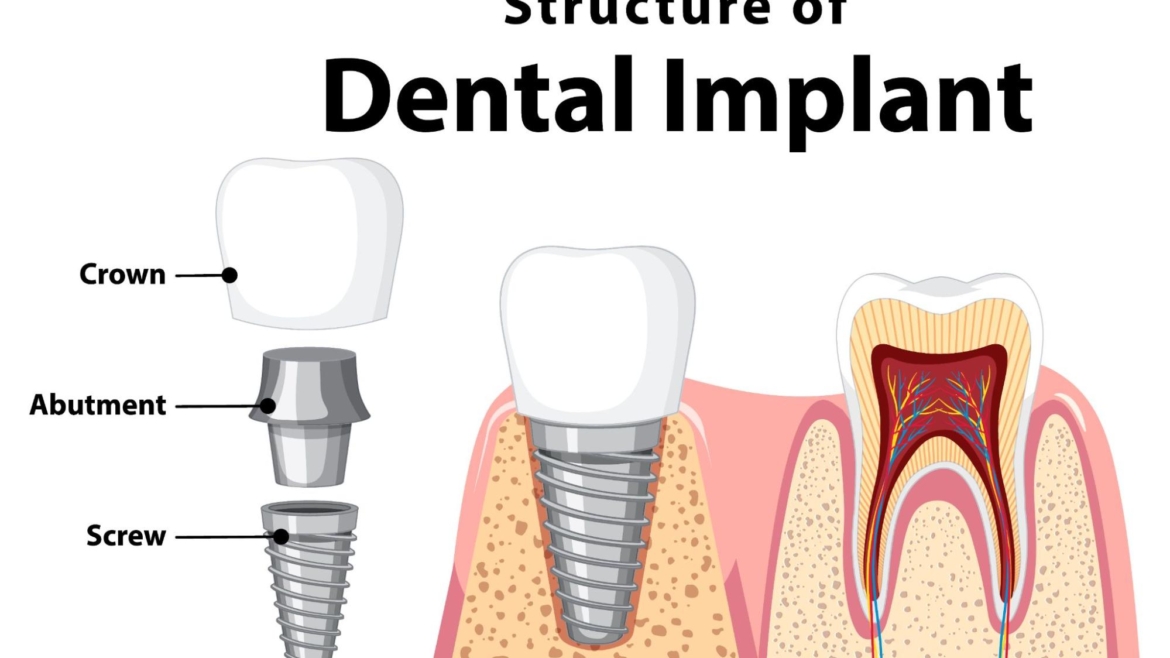If you’re considering dental implants or undergoing treatment, you might have encountered the term “dental implant abutment.” But what exactly is a dental implant abutment, and why is it such a crucial part of the dental implant procedure?
Table of Contents
- What is a Dental Implant Abutment?
- Why is the Abutment Important?
- Types of Dental Implant Abutments
- The Process: How Is a Dental Implant Abutment Placed?
- FAQs About Dental Implant Abutments
What Is a Dental Implant Abutment?
A dental implant abutment is a small connector piece that plays a pivotal role in the dental implant system. It acts as the link between the titanium implant screw, which is surgically placed into the jawbone, and the dental crown, bridge, or denture that replaces the missing tooth. Essentially, the abutment is what allows the visible tooth restoration to stay securely attached to the implant.
Imagine the dental implant as a three-part system:
- The Implant: A titanium or ceramic post inserted into the jawbone, acting as the tooth root.
- The Abutment: The middle component, connecting the implant to the restoration.
- The Restoration: The crown, bridge, or denture that replicates the appearance and function of a natural tooth.
Why Is the Abutment So Important?
The abutment’s primary function is to provide a stable and secure anchor for the dental restoration. Without this critical piece, the replacement tooth would not have the structural support it needs to withstand the daily forces of chewing and biting. Furthermore, the abutment ensures a precise fit between the implant and the restoration, which is crucial for long-term success.
Key Roles of a Dental Implant Abutment:
- Stability: It keeps the restoration securely attached to the implant.
- Custom Fit: Abutments can be customised to match the angle, height, and position of the restoration for a seamless fit.
- Durability: Made from materials like titanium, zirconia, or gold, abutments are designed to endure years of use.
Aesthetic Function: For front teeth, aesthetic abutments are used to ensure the crown blends naturally with surrounding teeth.
Types of Dental Implant Abutments
Not all abutments are created equal. The type of abutment used will depend on your specific dental needs, the location of the implant, and your dentist’s recommendations. Here are the most common types:
1. Standard Abutments
Standard abutments are pre-fabricated and come in various sizes. These are often used for straightforward cases where no significant customisation is needed.
2. Custom Abutments
For more complex cases, custom abutments are created using digital impressions of your mouth. These provide a better fit and are often used for highly visible areas, such as the front teeth, where aesthetics are critical.
3. Healing Abutments
Healing abutments, or “healing caps,” are temporary components placed during the healing phase after implant surgery. They shape the gum tissue around the implant site to create a natural-looking contour for the final restoration.
4. Angled Abutments
When the implant is placed at an angle due to bone limitations, angled abutments help correct the alignment, ensuring the crown sits in the proper position.
Benefits of Dentures
- Affordable Option: Dentures are typically more budget-friendly compared to implants.
- Non-Invasive: They don’t require surgery, making them suitable for patients who prefer less invasive solutions.
- Quick Results: Dentures can often be fitted faster than implants, providing a timely solution for missing teeth.
Customisable Fit: Our team ensures a comfortable and precise fit to improve your eating and speaking abilities.
The Process: How Is a Dental Implant Abutment Placed?
The placement of a dental implant abutment occurs after the implant has fully integrated with the jawbone, a process known as osseointegration. Here’s what you can expect:
- Healing Phase: After the implant is placed, the jawbone needs time (usually 3–6 months) to fuse with the implant.
- Abutment Placement: Once healing is complete, your dentist will make a small incision in the gum tissue to expose the implant and attach the abutment. This is typically done under local anesthesia and is a minimally invasive procedure.
- Gum Healing: The gum tissue will heal around the abutment, creating a stable foundation for the restoration.
Final Restoration: After the gums have healed, the custom crown, bridge, or denture is attached to the abutment.




